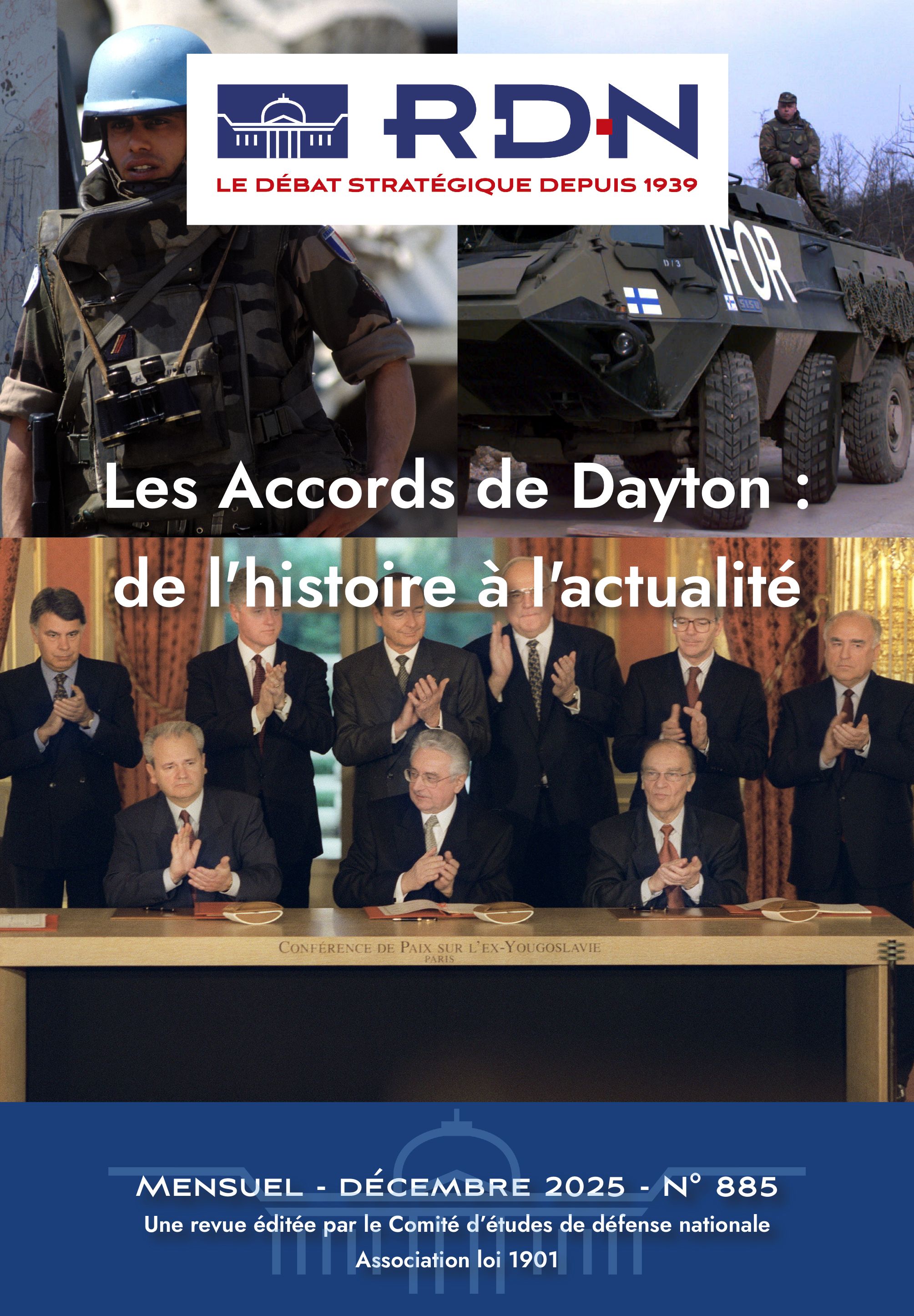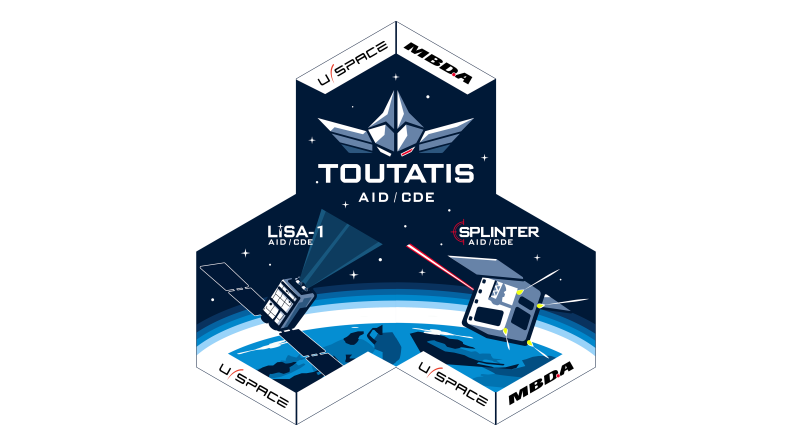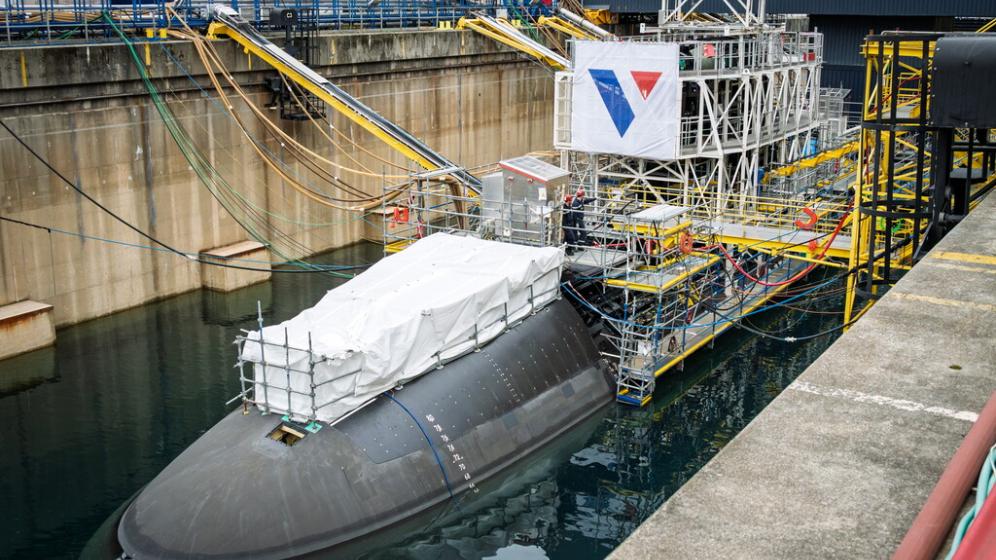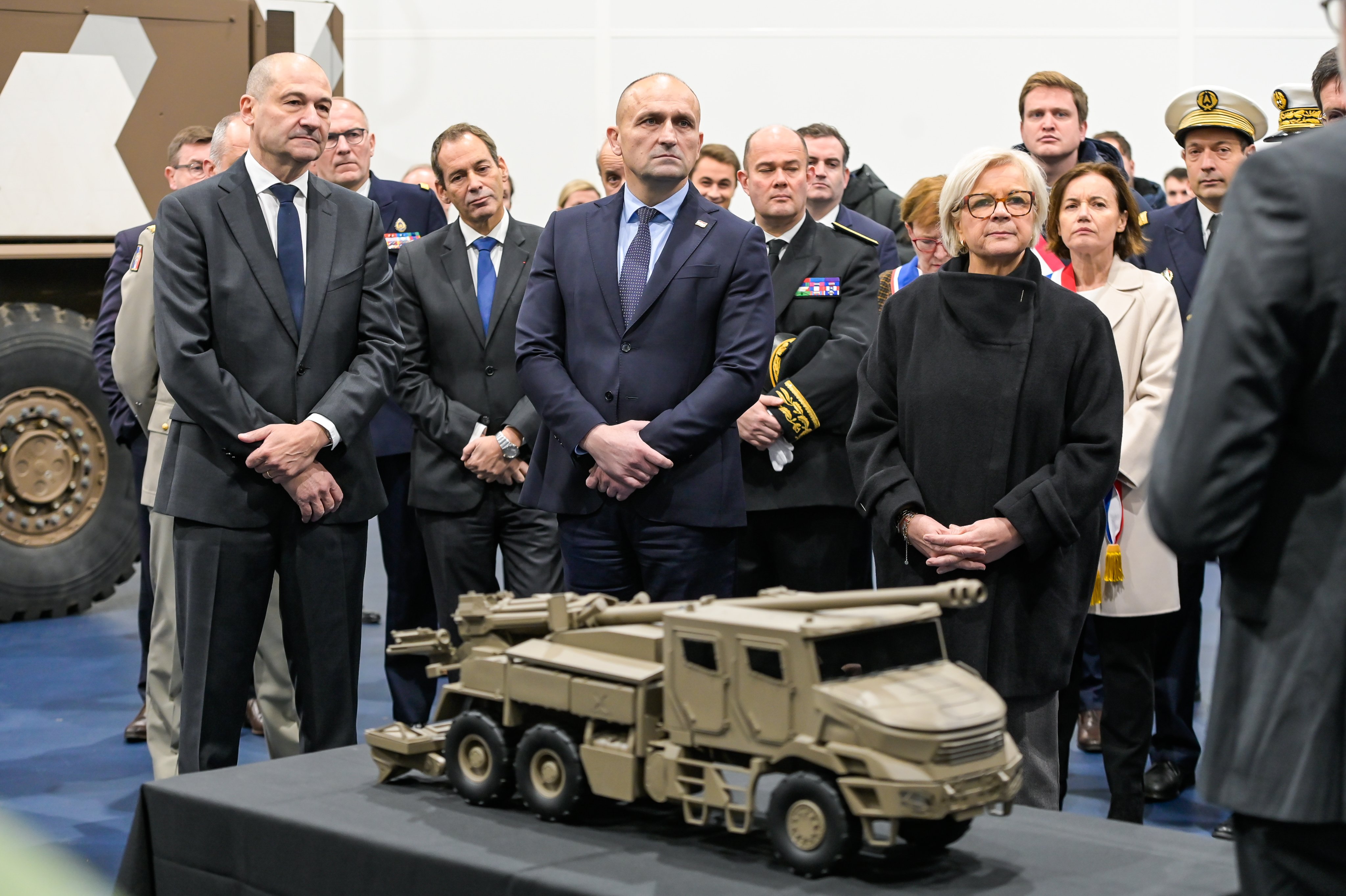For aviators, the idea of moral force is a matter of their collective ability to overcome the particular stresses of their profession in facing up to their responsibilities. These require them to transmit a message which can sometimes run contrary to the more easily drawn conclusions of recent conflicts.
Air Power and Moral Force
If there is one generally agreed lesson that could be drawn from the Russian attack on Ukraine on 24 February 2022, it would probably be on the importance of moral forces in war. It is because he badly assessed the capability for resistance of the Ukrainian nation and its forces that Vladimir Putin has seen his ‘special military operation’ fail and turn into a long, bloody and costly war. Of course, there is nothing new in this lesson: Clausewitz made the will to fight the essential parameter of warfare. Moral forces are the cement that binds the three central elements of his paradoxical trinity(1) and as a result are the true target of strategy—the belligerents’ centre of gravity. Nevertheless, a number of questions is now being raised from the very fact that all contemporary observers agree on the centrality of moral forces and their resilience as a vital lesson to be drawn from the war that has been raging in the East for over a year.
The first of these is to ask how we have managed to lose sight of such a basic axiom of warfare. The response certainly touches on the international context, coloured for over thirty years by the illusion of the triumph of universal values and the complete effectiveness of nuclear deterrence, and of their commonly-held corollary in warfare matters, that war had become the business of specialists and henceforth had a limited level of violence, now barely lethal. It was inevitable that this veil of illusion would be torn aside sooner or later, opening our eyes to the weakness of our defence arrangements in broad terms and to the magnitude of the reconstruction work to be undertaken.
Which leads us to the second question: how do we build the moral force of the nation and its armed forces? The Chief of Staff of the French armed forces has determined this as a strategic line of effort, one which requires strengthening of the link between the forces and the nation, consolidation of rear bases—families in particular—and tougher training for soldiers.
The third question relates to the previous one: how do we strike at the adversary’s moral forces? This question is central to the tasks of military planning in both open warfare and deterrence. Current thoughts on merging captors and effectors, full-spectrum targeting and influence have no other objective than that of injuring the adversary’s will to fight.
Aviators clearly have a particular point of view on these three questions which arises from the fact that they are front-line combatants for whom operations are a permanent, everyday occurrence—they do not live the alternating cycle of operational planning and deployment on mission. For them, the mission sustains all activity; they operate from their air bases, from national soil. In a very particular way that conditions their relationship with the matter of moral force.
What Moral Force do Aviators Need?
The dual nature of air power (strategic and tactical) brings a form of tension to aviators’ very identity, a tension evident at every level of this identity.
First, in the way he acts. The aviator is as much a ‘knight of the sky’, the solitary pilot admired by soldiers in the trenches in 1914-1918, as an anonymous crew member of a bomber flying over Germany in the Second World War. On one hand he represents the end point of a transformation of the isolated soldier, which began with Bonaparte's military columns as a reaction to the logic of the Greek phalanx and the Roman legions which still predominated in armies of the line in the 17th century. On the other, he is just as much a wing man who must discipline himself to keep to his position in the flight. The contrast between the hero and the phalanx has been drawn since the days of Herodotus, and is also seen in terms of virtues: the warrior fury of Homer’s hero stands in opposition to the discipline of the Hoplite who had to hold the line and protect the man to his left with his shield. This contrast enabled the Roman legions to conquer the barbarians coming from the north and east; later, English archers triumphed over French knights at Agincourt but suffered the beginnings of a turnaround against Napoleon’s conscripted armies. It was the furia francese (French fury), the shock action of the deep columns of the French Empire, that shook up the (admittedly smaller) armies still formed in lines. In the 20th century the same contrast was evident in the difference between the Epinal image, popular and idealised, of aviators as hotheads and the fact that when the Air and Space Force decided to define its values it went more for respect and service than courage and daring.
This decision also tells us that in reality courage and daring do not pose any problem for the Air and Space Force (Armée de l’Air et de l’Espace—AAE), nor indeed for allied air forces which have adopted more or less the same values (Integrity First, Service Before Self, and Excellence In All We Do for the US Air Force; Respect-Integrity-Service-Excellence for the Royal Air Force). Courage goes without saying for an aviator, first, because he has to overcome his fear to take the controls of an aircraft or helicopter and especially, as every tale and the entire history of military and civil aviation illustrate, because the mission is sacred, and because the mission forms part of aviators’ daily life on their bases and elsewhere.
The tension at the heart of the identity of the aviator insofar as it concerns the use of air power is apparent in the difference, according to Clausewitz’s distinction, between strategic use, which is decisive in the war and whose direct end state is the enemy’s will to fight, and tactical use during a battle, which is decisive in the theatre and whose objective is military victory. Giulio Douhet probably understood Clément Ader’s premonition better than anyone, that the air arm would make face-to-face confrontation of forces obsolete, and allow the enemy’s centre to be reached—his population to be attacked directly. Terror from the air has not always held its promise, except in the extreme case of the atomic bombing of Japan. The fact remains that the principle of a strategic air campaign conducted against the adversary’s rear, targeting nerve centres, is virtually the sole mode of modern warfare that has been able to achieve its war aims among Western powers—the classic example being the Desert Storm campaign of 1991, but it was also the case in Kosovo in 1999 where there was no deployed ground force. The vision of an air arm exclusively dedicated to strategic use can find itself in opposition to one that is limited to tactical use in support of ground operations. A striking example of this contrast is related by the American historian Carlo D’Este in his history of the Normandy campaign.(2) During the operation to relieve American forces around Cherbourg, in order to support ground operations the allied high command had to be particularly resolute with the air operations command in order to ‘borrow’ bombers otherwise destined for attacks against Germany. The difference between the two schools of thought on use is well known to aviators, and is apparent in the equipment used, in doctrine and in the command structure. In reality, these two schools are complementary: they require from the air forces a level of agility that enables them to refocus their effort according to ever-changing political, strategic and tactical stakes. The multi-role capability of assets is one particular response to maintaining the balance, from the Rafale to the A330 Multi Role Tanker Transport (MRTT) via the A400M.
The tension is also apparent in terms of service identity: for many years, air forces were simply components of land armies. It was only the strategic use of the air arm, initially in the British Empire and later, on creation of the US nuclear deterrent, that gave birth respectively to the Royal Air Force in 1918 and the US Air Force in1947. In France, the Air Force gained its independence in 1934 as the result of a political compromise. Still today, the AAE is alone among the three services to be both an army in the primary sense of the word—that is, responsible for directly obtaining military effects (or even strategic or political ones, in the case of the AAE), and also a support or reserve force—in other words, more an arm than an army. Support of airborne operations and fire support to air-ground operations often reduces the Air Force to the level of helper or enabler, rather than leader.
One could discuss further the existential tension at the heart of aviators’ identity. Even within our common experience it is evident: between the realist view of international relations of the combat crew and the more constructivist view of the transport crew. Suffice it to sum up these opposing views by saying that power from the air is, as ever, fundamentally renewing strategic debate by questioning its key concepts. That aside, what concerns us here is knowing how this tension acts on moral force.
In essence, the identity tension could be expressed very simply, even simplistically, as the contrast between barbarism and civilisation. On one hand the aviator is the modern knight who takes it upon himself to represent an entire nation in a singular combat whose outcome will be decisive. Symbolically, he is David facing Goliath, the Horatii against the Curiatii: he somewhat incarnates the civilisation that limits warrior-like violence. General Philippe Steininger(3) expresses this idea when he evokes the elitist character of air warfare. In stark contrast, in particular during the Second World War and in other more limited conflicts, the aviator has been the very person who unleashed all the blind brutality that technology could devise upon the civilian populations that several centuries of civilisation had managed to spare from the violence of war. Mass bombing has gone, thanks to the considerable progress made in targeting and accuracy of weapons, albeit it remains real in a virtual sense in the context of nuclear deterrence, even though the contrast with the other concept of attacking only centres of power is again telling here. To sum up, whilst air power can sometimes domesticate, civilise or even normalise this violence, it is also the means that makes possible and real an escalation to theoretical extremes, albeit judged impossible by Clausewitz. This alternative (barbarism vs civilisation) puts a heavy responsibility on aviators.
Responsibility: the key word with the double meaning of a burden to be both borne and faced up to. It is within the second of these meanings that aviators of all nations have developed their culture of responsibility, and it is in this culture that we find a response to the question of moral force.
It is logical, almost intuitive, to seek support from within the group (family, unit, regiment, arm, service, nation) in order to recharge the batteries of moral force. The famous French airman and writer Antoine de Saint-Exupéry expressed the reality of this very well in Flight to Arras (published as Pilote de guerre, 1942), ‘I am of them, as they are of me’. The feeling of belonging is at the heart of the notion of identity. Our family, friendly, professional and national relationships are like coordinates that define a point in space—they define not only where we are but also who we are.
That said, reinforcing the group is not sufficient to maintain the moral force of aviators, since their identity does not boil down to simple membership of a body: its essence is to be found in the notion of responsibility. Aviators are people who feel responsible: cultivating their resilience requires allowing them to accept their responsibilities. Because of this, the moral resilience of aviators is found in an ethos of action; the manner in which it is put into practice has been very well described by Lieutenant Colonel Florian Morilhat.(4) On one hand it is the ability to do their job properly and on the other, to be ethically responsible for their decisions and for their ethos of conviction, according to the circumstances. This double requirement is summed up in the word professionalism.
What is the Role of Air Power in Destroying Adversaries’ Morale?
This primary approach to the issue of moral force is nevertheless secondary to the wider matter of collective responsibility with regard to air power. Thus far we have examined the question from the angle of the individual, of what makes up his personal identity, as well as through the issue of belonging to the group. However, beyond the identity of an aviator, it is the identity of aviators which constitutes this collective responsibility. This is the fruit of mastery of the air environment, the sum of knowledge, skill, and practices which silently form a culture. Even without restricting the concept of culture to what the German-American political scientist Alexander Wendt referred to as the sum of shared knowledge, we can nevertheless recognise in common practice and daily experience of the air and space environment a fundamental element which leads to an original vision of the world. This collective responsibility generates obligations that go beyond those of individual responsibility which, when it comes down to it, is a matter of a single ethic—professionalism. Collective responsibility puts a moral duty on the group, in this case the family of aviators, with regard to those outside the group, the public, and in relation to the aim of the group, which in this case is air power, or air activity in general. Just as doctors have a collective responsibility in the case of an epidemic (of informing the public and publicising good practice), aviators have a collective responsibility towards the public. This involves ensuring that the country is warned of the implications of air activity in war and as far as possible is ready to face it. The notion of collective responsibility is not unique to aviators—it applies equally to sailors, soldiers, cyber-combatants and others in their respective fields. In the aviators’ case, however, expertise and experience of the air and space is something difficult to share (here we find the notion of elitism), hence the responsibility that results from it is even greater.
The consequences of the intervention of an air force in war have a direct and immediate effect on the notion of resilience and morale. What finer, yet more tragic illustration of moral force could there be than the resistance of Londoners during the Blitz? Resilience was certainly needed to endure with such fortitude the war of attrition waged by Adolf Hitler: only the devastating power of the German bombers could test to that degree a people accustomed to the hardships of the continental blockade. The third dimension is the one that can extend beyond the front in order to reach the centres of gravity, whose collapse would lead to the destruction of the adversary’s capability for resistance—more precisely, his resilience, be it moral or material. In this respect, the contrast between the 1991 Gulf War and the Russian campaign in Ukraine is striking. In one case, a month-and-a-half long air campaign with more than 1,000 daily sorties (100,000 sorties in 43 days), followed by a ground offensive lasting 100 hours; in the other, one brief day of ‘preparation’ from the air before a ground assault that was never completed because it was impossible.
Regarding moral force and resilience from the aviator’s point of view, the challenge of what we are learning from the war in Ukraine after a year of fighting is precisely that we should avoid considering such teaching as definitive lessons. If we were to believe some analysts, air power has been made obsolete by air defence systems and the major issue is the omnipresence of UAVs. They say we are seeing the return of firepower (from artillery) and tanks. Indeed. These conclusions should not hide the fact that the Russians did not exactly conduct an air campaign before their ground attack. One must take note of the fact that if Western forces had planned the same operation, they would have set about it completely differently, as the history of recent conflicts illustrates. The Russian error probably stemmed from poor assessment of the capability for resistance of the Ukrainian State and the will for the survival of the Ukrainian nation—the famous moral forces. It might also come from the incapability of Russian forces, Russian air forces in particular, to reduce this capacity for resistance before starting ground operations. That is even without mentioning the necessity to reduce Ukrainian defence (which ought to have been the aim of the first phase of the campaign): the elementary points of the operational plan should have included assurance of control of airspace in order to guarantee freedom of action on the ground.
Put another way, both history and strategic science teach the central position of air power in modern warfare. Aviators’ collective responsibility is therefore to show moral force (!) by calling upon it in both good and bad times.
Conclusion: the Tyranny of the New
The war raging in the east of Europe is offering lessons to be learned for our Air and Space Force: the importance of Suppression of Enemy Air Defence (SEAD), of the use of drones, of drone countermeasures, of taking attrition into account when defining our format whose crew training activity can no longer be the sole parameter, the importance of the reserves—a corollary of attrition, all to maintain freedom of manoeuvre and decision for the President of the Republic.
Nevertheless, the principal lesson is probably the fact that we are collectively surprised to rediscover the fundamental importance of resilience and moral forces. Heraclitus said, ‘No man ever steps in the same river twice’, so Ecclesiastes answered, ‘There is nothing new under the sun’. We must beware of thinking as new that which has always been the case and as permanent, that which is fortuitous. War remains a battle of wills, a business of passion, intelligence and determination, unchanging in its violent nature. The manner of combat, on the other hand, has changed since 1914 even if the Russia-Ukraine war might make us think the opposite. The security of the French and of European peoples is at stake and will play out first in the air and in space. It behoves the family of aviators to carry this message, and to organise themselves to ensure it is carried, at a time when strategic decisions are being made. For aviators, the matter of moral force is not so much one of developing it within their group, since courage has always been a natural value for each one of them and still is, but more of bearing it for the benefit of the whole nation. ♦
(1) Aron Raymond, Penser la guerre, Clausewitz, Tome 1 [On War, Clausewitz, Volume 1] Gallimard, 1976, 472 pages.
(2) D’Este Carlo, Decision in Normandy, Collins, 1983.
(3) Steininger Philippe, Les fondamentaux de la puissance aérienne moderne [The fundamentals of modern air power], L’Harmattan, 2020, 224 pages.
(4) Morilhat Florian, Éthique et puissance aérienne [Ethics and air power], Économica, 2020, 112 pages.







